For the last three weeks I have been a very busy bee in Orkney, hence the delay on updating the blog! The pupping season is advancing with giant steps, pups are getting bigger every day, some others have already been weaned and adults are showing the first signs of the annual moult!
The weather has mostly been on our side with overcast and slightly breezy days, which make photo-ID a much easier job. However, we’ve had our share of sunny and calm days, which make photo-ID a tricky business as the seals look all hazy through the lens and the pelage patterns are really difficult to identify. And there is always the risk of unwanted midges company! Very wet and windy days also pose a challenge as it’s hard to keep the equipment dry and safe.
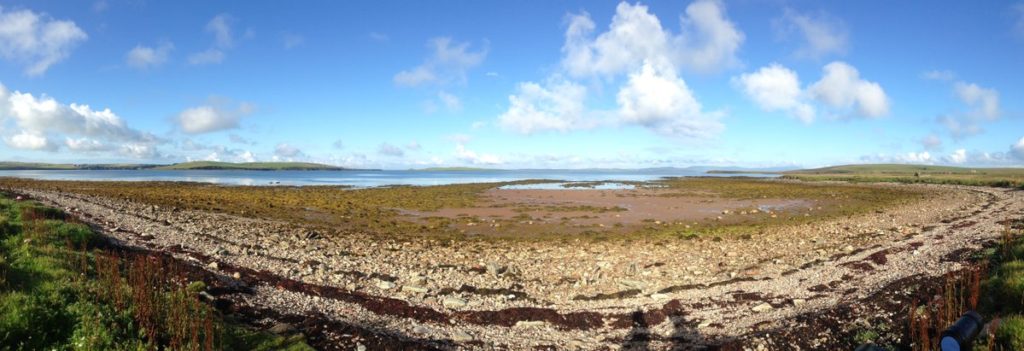
A couple of weeks ago I spotted a grey and a harbour seal having a nice rest on a hot and sunny day, both with a telemetry tag on. The grey seal was tagged as part of a separate SMRU project, which is collecting data for the Met Office. Grey seals are often seen sharing the same haulout sites as harbour seals, although haulout sites of only grey or harbour seals are also the norm. In Orkney, all the of the monitored haulout sites where we collect photoID data are mainly harbour seal haulouts, but grey seals are also found in smaller numbers. In Loch Dunvegan (Isle of Skye), where Andy collects photoID data, it’s very rare to have grey seals sharing the same skerries, but sometimes there is the odd grey seal that shows up.

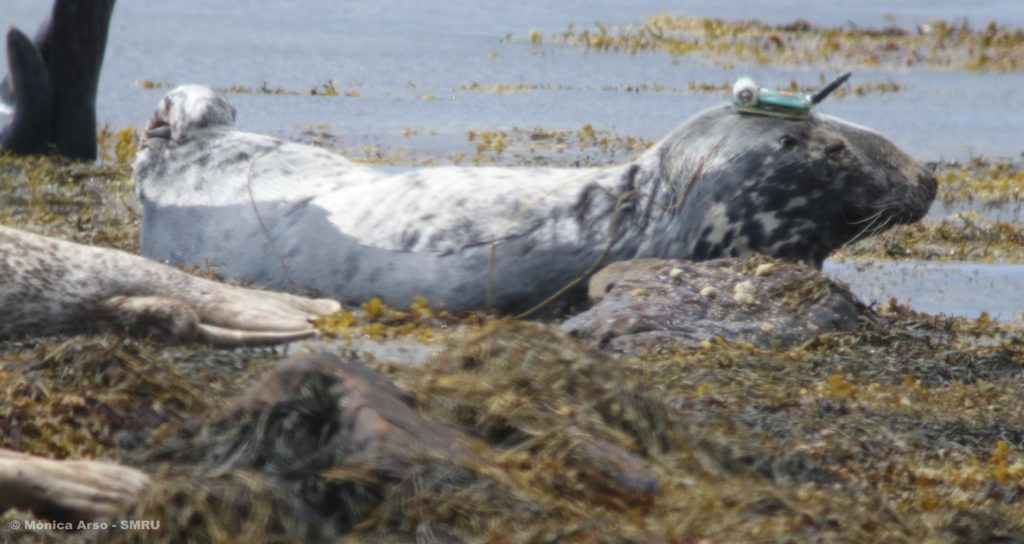
Grey and harbour seals have different haulout behaviours. While grey seals seem to be ok hauling out very close to each other, harbour seals prefer to keep a larger personal space around them. If another harbour seal or a grey seal comes too close, they start grunting and moving one of their foreflippers to keep the approaching seal away. Harbour seals will rather get back into the water and find a quieter space than staying too close to a curious grey seal!
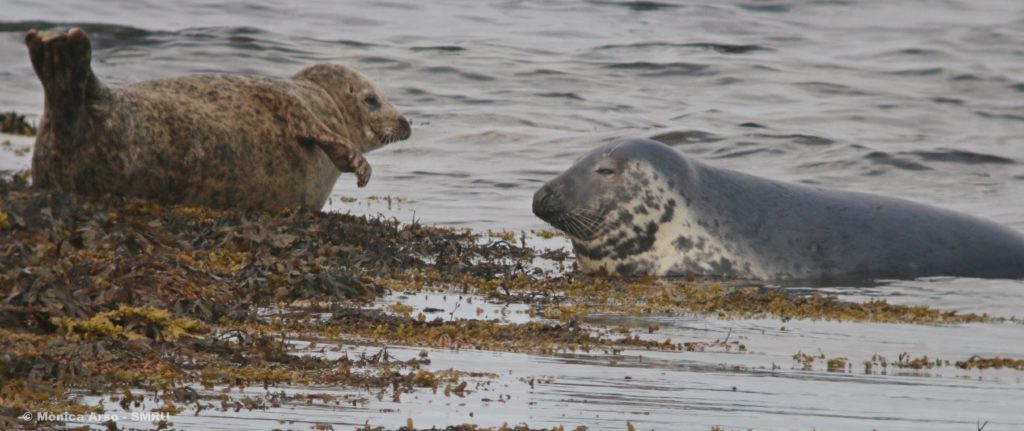
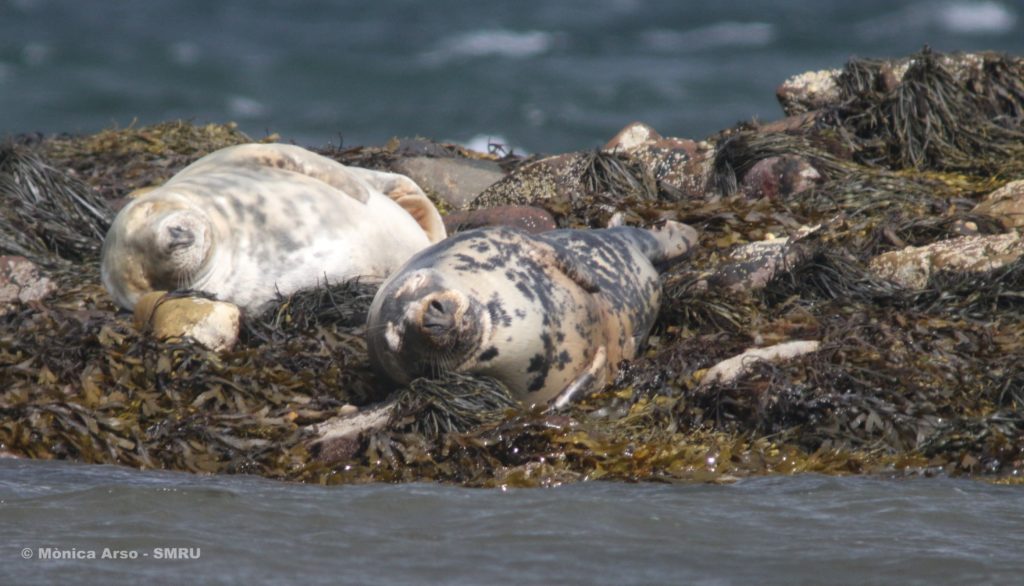
In general grey seals will haulout and rest, but in some occasions some other action can be seen. Sometimes younger grey seals will curiously approach harbour seal pups, or simply stir the tranquility of the haulout by walking through the grey seal haulout, starting a sequence of loud and characteristic grey seal hauling. Last month, as I was taking pictures in Widewall Bay, in South Ronaldsay, I filmed a couple of grey seals playing-fighting at one of the haulouts. In my limited experience with grey seal behavior it looked like a male grey seal playing with a female and making a rather poor attempt at mating.
Despite our main interest being harbour seals, one cannot miss the other wildlife sharing the haulout sites, starting with the many species of birds that can be regularly seen. Black-backed gulls and great skuas patrol the haulout sites in search of a free meal. At the start of the pupping season large groups of greylag geese can be seen at or flying past the haulout sites, generally in a rather noisy way! Oyster catchers and curlews add to the sound track, very often giving away my hiding spot to the seals. At one of the study sites, which sits below a cliff, the seals are accompanied by the constant chatter from fulmars nesting nearby. Redshanks and ringed plovers can be seen on the sandy and pebble shores close to the water, and herring gulls can be often seen walking around the seaweed covered rocks by the water. It turns out they like to eat sea stars!
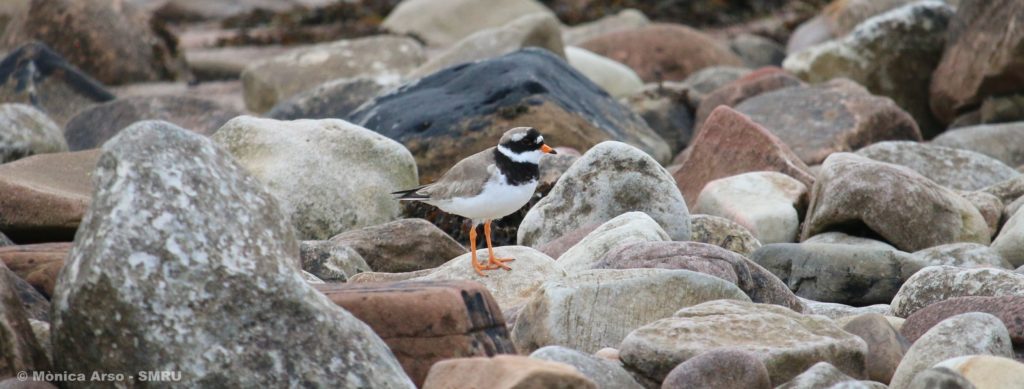
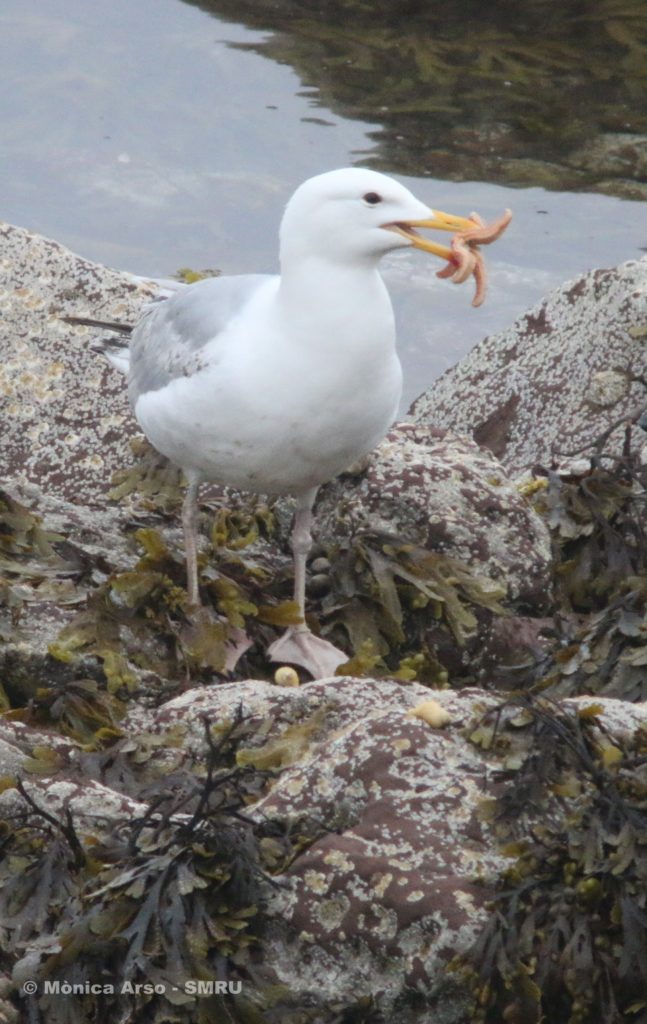
As the summer advances, larger groups of arctic terns are making an appearance at two the the monitored haulout sites, the larger being in Widewall Bay. A couple of weeks ago there was such a large group of them that they frequently photo-bombed my photo-ID effort. I don’t think the seals were very happy with such noisy neighbours!
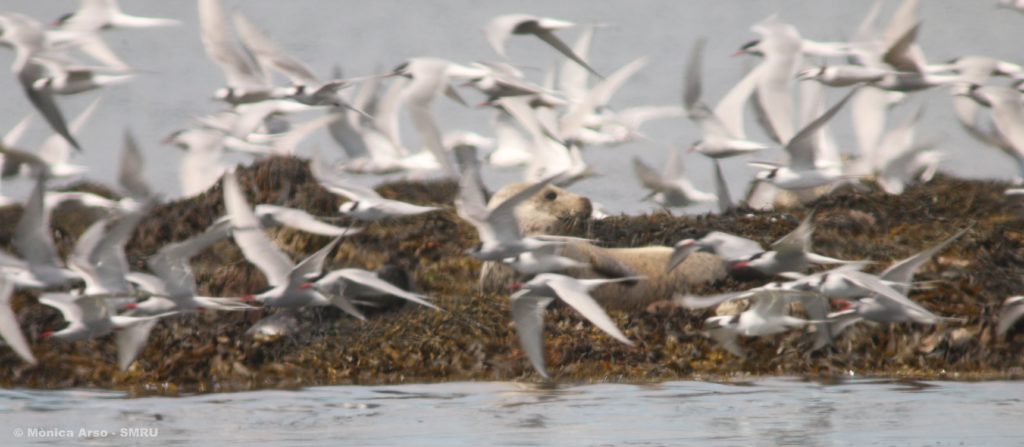
But it’s not all birds among the neighbours… there are also some more infrequent visitors. Last week we had a surprise visit from an otter! She was seen swimming past the haulout site and ended up coming up on shore to undergo a good clean up. She then had a quick rest before going back to the water. I was lucky enough to be close by without being spotted and the digiscope system we use to get photoID data did the rest… check the picture and video below.
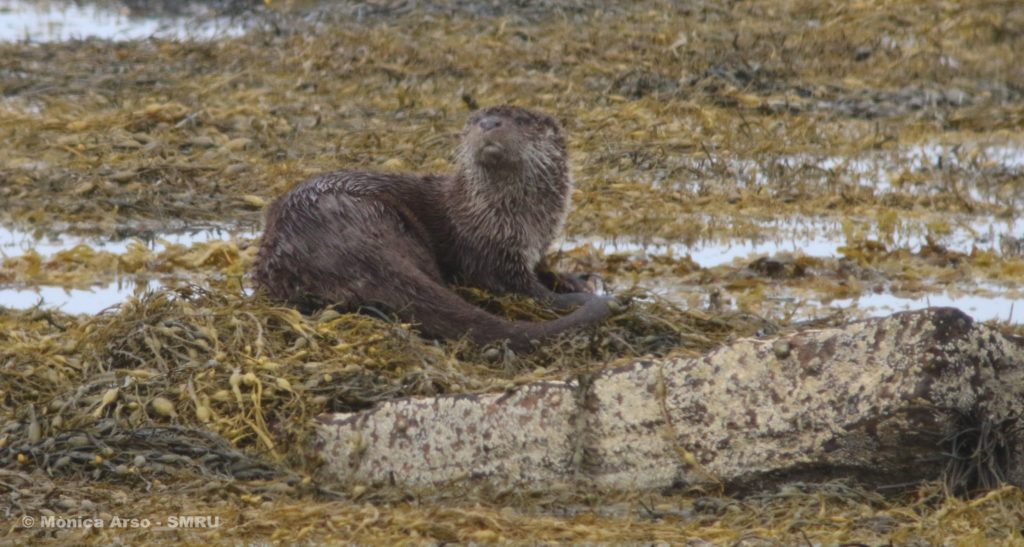
And finally, another marine mammal that can make an appearance is the killer whale. Killer whales are natural predators to seals, and are regularly seen around Shetland, Orkney and the north coast during this time of the year. I have personally never seen them nearby the haulout sites we monitor, but have seen them in other areas around mainland. Public sightings report them frequently in the Pentland Firth between Orkney and mainland, but also in the waters around Birsay. While going for a walk along Rerwick Head, at the north side of mainland, we were lucky enough to bump into a group of 5 killer whales that were swimming very close by the shore. After the initial excitement we managed to capture them passing by, see the video below. The group seemed to be composed by 1 male and 4 females or juveniles, the male having the very tall and straight dorsal fin. I seemed to recognize one of the females as Mousa, a female killer whale that is regularly seen in Shetland and Orkney waters. This female is also included in the catalogue of killer whales from Iceland (with ID number IS086). Like Mousa, some other individuals repeatedly move between Iceland and Scotland. These whales appear to feed on the Icelandic summer-spawning herring stock in the winter, and then move outside the summer distribution range of this herring stock (check more details on this published paper on the matter). More information on the Icelandic orcas can be found in their website and in their Facebook page
